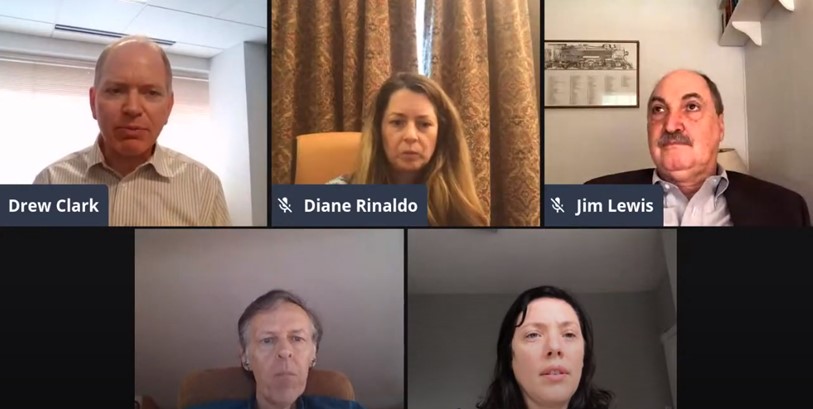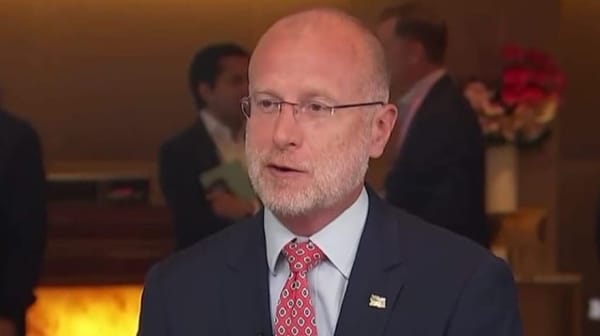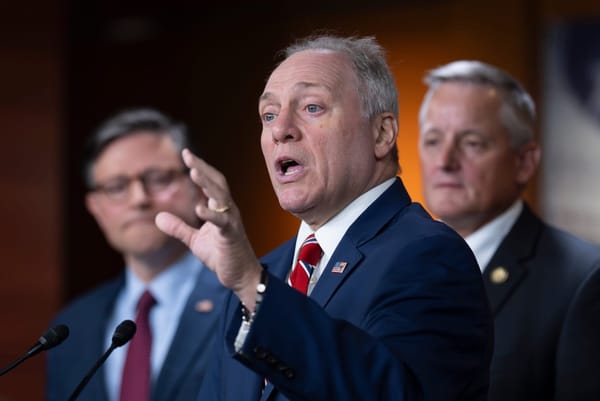Global Concern About 5G Security Has Become a Bipartisan Cause, Say Broadband Breakfast Panelists
November 17, 2020 — The transfer of power from the Republican Donald Trump to the Democrat Joe Biden is not likely to have much of an impact upon the way national security and supply chain issues are considered in the expansion of 5G networks, according to panelists at a recent session of the Broadb
Jericho Casper

November 17, 2020 — The transfer of power from the Republican Donald Trump to the Democrat Joe Biden is not likely to have much of an impact upon the way national security and supply chain issues are considered in the expansion of 5G networks, according to panelists at a recent session of the Broadband Breakfast Live Online event series, “A No-Nonsense Guide to 5G.”
Although the October 28 session took place before the November 3 election, panelists acknowledged that the administration of President Donald Trump has changed the political landscape with regard to Chinese telecommunications manufacturers Huawei and ZTE.
Watch the next Broadband Broadband Breakfast Live Online event, “A No-Nonsense Guide to 5G: A Case Study of Transformative Apps in the Enterprise,” on Wednesday, November 18, at 12 Noon ET.
For example, President Trump issued an executive order in May restricting U.S. companies’ ability to use Chinese-made equipment.
In the October 28 session, “National Security, 5G and Trusted Partners,” panelists including State Department official Ruth Berry, Jim Lewis of CSIS, Diana Rinaldo of the Open RAN Policy Coalition and Rob Atkinson, president of the Information Technology and Innovation Foundation, discussed how the ban came to be and the effect it is having on American 5G networks.
Bipartisan concern over foreign-made telecommunications equipment in American networks became widespread after Secretary of State Mike Pompeo ramped up pressure over the use of Huawei technology in 5G networks in May 2019, recounted Berry.
Berry is acting director for bilateral and regional affairs in the Office of International Communications and Information Policy at the U.S. Department of State.
From Trump administration cause to bipartisan ferver
Although rhetoric against China has been among the high-profile activities of Trump and administration officials including Pompeo, taking steps to “secure” American networks by restricting Chinese influence has become a bi-partisan causes, with Democratic Federal Communications Commissioner Geoffrey Starks and Republican Commissioner Brendan Carr each seeming to outdo the other on who can seem more opposed to China..
The movement for 5G networks outside the influence of Chinese suppliers has expanded. In October, the U.S. Department of State announced that it committed four more European nations to security statements on 5G, bringing the total number to 12.
Currently, 25 countries in the European Union are committed to putting in place U.S.-favored measures to address security or supply chain issues with their networks.

Atkinson agreed with governments who have banned Huawei and ZTE, saying that their equipment cannot be trusted in American networks.
“5G raises a whole new set of security concerns,” said Lewis, senior vice president at CSIS. According to Lewis, who defined 5G as “the merger of telecom and the internet”, the technology changes the whole nature of networks and creates new risks and cybersecurity problems.
Raising issues about Chinese companies compelled to operate with Chinese intelligence services
“Talk about Huawei and ZTE being untrustworthy is related to geopolitical factors, not technical factors,” said Berry of the State Department. “Under Chinese national intelligence law any Chinese entity, including corporations, is compelled to cooperate in secret with Chinese national intelligence services,” she said.
In order to ensure that U.S. 5G infrastructure will act in the best interest of consumers, Berry and her colleagues at the State Department have spent the past two years working with global partners to create criteria that would confirm 5G networks deployed are trustworthy.
According to Berry, the campaign is beginning to bear fruit and new standards for securing networks are being created around the globe. Berry said that as of yet, the best practices for building secure 5G networks, recommended by the U.S. State Department, are laid out in the EU’s Toolbox on Cybersecurity, CSIS’s Principles of Trust and Security, and the Prague Principle.
“The Prague Principle does a great job explaining what the criteria are for developing trusted networks,” added Lewis, detailing that the principles were developed about a year ago, when the Secretary of State worked with the Czech government to create standards for installing 5G networks securely.
Rinaldo, who as senior vice president of Beacon Global Strategies operated the Open RAN Policy Coalition, detailed the U.S. strategy for generating secure networks: utilizing domestically created technology and an open radio access network strategy.
Rinaldo, who served as acting administrator of the Commerce Department’s National Telecommunications and Information Administration, explained open RAN as the notion of taking the current 5G network architecture, which for the most part is a closed proprietary system, and standardizing each aspect of technology, between the radio, the software, and the hardware.
The open RAN strategy aims to create a robust and diverse supply chain, ultimately creating more competition and lowering prices.
Broadband Breakfast Editor and Publisher Drew Clark moderated the session, which is just one of five events in the event series, “A No-Nonsense Guide to 5G,” that is sponsored by Samsung Electronic America.

‘A No-Nonsense Guide to 5G’ sponsored by:

Events in “A No-Nonsense Guide to 5G” include:
- Wednesday, October 14, 2020, 12 Noon ET — “A No-Nonsense Guide to 5G: The Hype and the Reality of 5G”
- This opening panel will set the stage for Broadband Breakfast Live Online’s consideration of the policy, technology and practical questions around the 5G wireless standard. What is 5G, and why is there so much buzz about it? How much of an improvement is it over prior generations of wireless? In other words: What is real, and what is hype? How the issues of trusted partners, rights-of-way deployment, and spectrum policy interact? Where is 5G seeing early successes, and what are the stumbling blocks?”
- Wednesday, October 28, 2020, 12 Noon ET — “A No-Nonsense Guide to 5G: National Security and Trusted Partners”
- This panel will consider the global landscape for the 5G equipment ecosystem. It will consider issues in core networks, radio access networks and in handset equipment. How has the global landscape changed? Will 5G benefit from – or suffer because of – a new Cold War with China? How are American companies reacting to federal government initiatives for trusted partners? Where can the U.S. turn for solutions and alternatives to Chinese manufacturers?
- Wednesday, November 18, 2020, 12 Noon ET — “A No-Nonsense Guide to 5G: A Case Study of Transformative Apps in the Enterprise”
- 5G is seeing its first real successes in the enterprise marketplace. To glimpse the future more accurately, Broadband Breakfast Live Online will consider case studies of applications in enterprise environments. What technologies and processes bring 5G success to the business marketplace? What needs to happen to bring 5G successes to the consumer marketplace?
- Wednesday, December 9, 2020, 12 Noon ET — “A No-Nonsense Guide to 5G: Wireless Infrastructure, Municipal Rights-of-Way and the 5G Rural Fund”
- To realize the promise of 5G, far more base stations — wireless infrastructure facilities — will be necessary. 5G facilities and towers may not be as big as in previous generations of wireless technology. Still, the need for far more facilities has already created tensions with municipalities over rights-of-way. How can these conflicts be minimized? What are smart cities already doing to expedite wireless infrastructure deployment? Can the process be improved? Additionally, how will the FCC’s Rural Fund for 5G affect deployment?
- Wednesday, January 13, 2021, 12 Noon ET — “A No-Nonsense Guide to 5G: Spectrum Policies to Advance Better Broadband”
- More than simply the next generation of wireless technology, 5G deployments make use of radio frequencies from an extremely wide range. For example, some 5G deployment are using mid-band spectrum between 3.4 GigaHertz (GHz) and 6 GHz. But 5G networks also promise tap into spectrum between 24 GHz and 100 GHz. It deploys these millimeter bands using network slicing and other advanced wireless tools. What new spectrum policies are necessary for 5G to flourish?











Member discussion